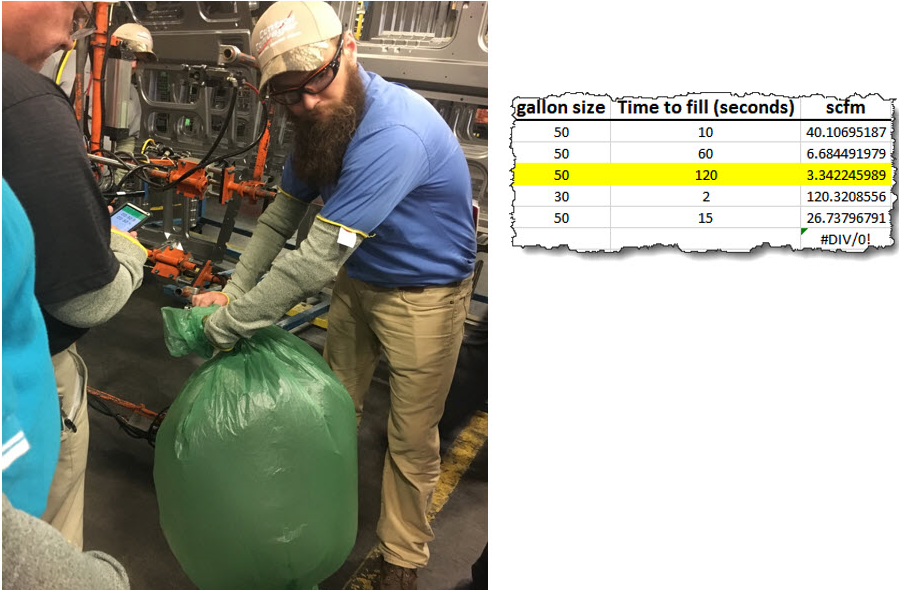Did you know that garbage bags have a use in the compressed air industry?
The use of garbage bags to determine compressed air leakage, is described in the U.S. Department of Energy’s (USDOE) MEASUR tool and is a straightforward and cost-effective method for roughly estimating air leaks in a compressed air system. This technique is particularly useful for small compressed air systems or in situations where precise leak detection equipment is not available.
Take a standard plastic garbage bag and securely wrap it around the outlet of the component or leak being tested. Make sure there are no holes in the bag and that the seal between the bag and the outlet is tight enough to prevent air from escaping.

Once the bag is in place, turn the air to the component or leak on. As the air flows, it will fill the bag with air. Use a stopwatch to time how long it takes for the bag to inflate fully.
The volume of the bag is known or can be estimated based on the dimensions of the bag (length x width x depth). Using the time it takes to fill the bag and the volume of the bag, you can calculate the flow rate of air into the bag. This flow rate can be used to estimate the leakage rate.
For example, if an 8-cubic-foot bag fills in 2 minutes, you can calculate the flow rate as follows:
Flow Rate = Volume of the bag (in cubic feet) divided by time (in minutes)
4 cfm flow = 8 cf divided by 2 minutes
Remember to convert all measurements into consistent units.
This method is inexpensive because it uses readily available materials. And it is easy to implement without specialized training or equipment. It can be used in various parts of the compressed air system that cannot be hooked up to a flow meter.
This method provides an estimation rather than a precise measurement of air leakage. The accuracy can be influenced by how well the bag is sealed and the method used to measure the bag’s volume. This technique is more suitable for smaller systems or individual components. Larger systems with significant air flow might require more accurate methods such as thermal mass flow meters or calibrated ultrasonic leak detectors for accurate detection and quantification.
Download the USDOE MEASUR tool here: https://www.energy.gov/eere/iedo/measur
Filed Under: Air Compressors, Air Preparation, Components Oil Coolers, Compressed Air Technologies, Pneumatic Tips